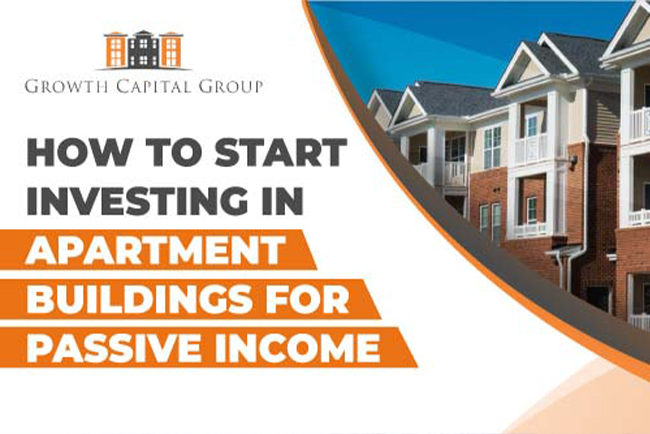The actual property investment panorama has advanced, and multifamily syndications have emerged as a famous road for both skilled and beginner buyers. If you are curious about how passive traders can participate and income in this dynamic region, you’ve come to the proper vicinity. Let’s demystify multifamily syndications and discover the opportunities they present.
Emerging Trends in Multifamily Real Estate Syndication
Definition of Multifamily Syndications
Multifamily syndications incorporate a group of shoppers pooling their assets to collectively spend money on large-scale tangible assets duties, commonly rental homes. This collaborative approach allows human beings to access funding possibilities beyond their means.
Growing Popularity
Multifamily syndications have received massive recognition due to their ability to appeal returns and the benefits they provide to active and passive traders.
How Multifamily Syndications Work
Syndicator’s Role
A syndicator, often an actual estate professional or organization, takes the lead in identifying, obtaining, and coping with multifamily assets. They play a critical role in the fulfillment of the syndication.
Passive Investor Participation
Passive buyers, alternatively, contribute capital to the syndication; however, they take a hands-off method to normal operations. Their role is to enjoy the blessings of actual property ownership without the duties of lively management.
Benefits for Passive Investors
1. Diversification
Investing in multifamily syndications gives passive consumers various portfolios, decreasing hazards compared to individual property possession.
2. Professional Management
Passive investors enjoy the understanding of the syndicator, who handles belongings manipulation, tenant individuals of the circle of relatives, and strategic selection-making.
3. Potential for Higher Returns
Even when controlled successfully, multifamily properties can generate attractive returns through apartment income and belongings appreciation, imparting functionality to passive investors for better income.
Risks and Challenges of Multifamily Syndications
1. Market Volatility
The actual belongings market isn’t proof of fluctuations, and passive investors must be privy to capacity market dangers affecting belongings values.
2. Operational Risks
Challenges with sudden maintenance problems or monetary downturns can impact the general performance of the syndication.
3. Exit Strategy Concerns
An easy and feasible go-out technique is critical. Passive buyers should apprehend the syndicator’s plans for selling or refinancing the assets.
Considerations for Passive Investors
1. Due Diligence
Thorough due diligence is vital before committing to a multifamily syndication. This includes assessing the assets, the syndicator’s song record, and the phrases mentioned inside the Private Placement Memorandum (PPM).
2. Understanding PPM
The PPM is a felony report that outlines the terms of the investment, combined with the expected returns, dangers, and the buyers’ rights. Passive buyers need to assess and understand its contents carefully.
3. Exit Strategy Assessment
Evaluate the syndicator’s go-out method and ensure it aligns with your funding goals and timeline.
Steps to Participate in Multifamily Syndications
1. Research Potential Syndicators
Identify respectable syndicators with a tested song record. Research their beyond obligations, investor reviews, and everyday reputation in the agency.
2. Evaluate Investment Opportunities
Carefully affirm the investment possibilities supplied by syndicators, considering elements including location, property circumstance, and potential returns.
3. Engaging with Syndicators
Building a relationship with syndicators is vital. Attend networking activities, webinars, and seminars to hook up with skilled professionals within the subject.
Tax Bеnеfits of Rеal Estatе Passivе Incomе: Maximizing Your Rеturns
Tax Implications in Multifamily Syndication
Pass-Through Entities
Multifamily syndications based on pass-thru entities can provide tax advantages to customers, including the functionality to skip earnings and losses without delay to the investors.
Depreciation Benefits
Investors may also benefit from depreciation allowances, lowering their taxable earnings and doubtlessly improving typical returns.
Consultation with Tax Professionals
Given the complexity of tax implications, passive investors are encouraged to seek advice from tax experts to maximize their advantages and navigate ability-demanding situations.
Common Myths Debunked
Inaccessibility to Small Investors
Contrary to unusual belief, multifamily syndications are reachable to a massive style of investors, which includes people with smaller capital contributions.
Lack of Control
While passive investors relinquish standard operational control, they nevertheless hold decision-making electricity through balloting on essential problems mentioned in the walking settlement.
Limited Profit Potential
Multifamily syndications can provide exceptional income, especially when managed correctly and aligned with the traders’ desires.
Future Trends in Multifamily Syndications
1. Technology Integration
Integrating generation, statistics analytics, and clever belongings management systems is anticipated to beautify multifamily syndications’ overall performance and profitability.
2. ESG (Environmental, Social, Governance) Focus
A developing trend in the agency includes a heightened awareness of sustainability, social duty, and strong governance practices, aligning with broader market inclinations.
3. Impact of Market Trends
Stay knowledgeable about evolving market traits that could impact multifamily syndications, ensuring investment techniques stay adaptive and resilient.
Tips for Successful Passive Real Estate Investing
1. Establishing a Connection
Actively create a community inside the tangible assets investment network by establishing connections with various syndicators, industry experts, and passive clients.
2. Keeping Up to Date
With webinars, organization courses, and continuous learning, keep up with changing market conditions, regulations, and advancements.
3. A Long-Term View
Take a long-term view when approaching multifamily syndications, understanding that real asset investments consistently produce the best possible outcomes over time.
Education’s Function in Participating in Syndications Successfully
1. Ongoing Education
Ongoing education is crucial for passive clients. Keep up with changes to regulations, funding methods, and industry trends.
2. Passive Investor Resources
Examine educational resources to expand your understanding of multifamily syndications, including books, online manuals, and mentorship programs.
3. The Value Guiding
Mentorship can offer invaluable guidance and insights, particularly for individuals new to multifamily syndications. Seek knowledgeable mentors to shorten your learning curve.
Conclusion
1. Recap of Benefits and Risks
Ultimately, multifamily syndications offer passive investors a unique road for actual property investment, presenting diversification, export control, and the potential for attractive returns. However, it is essential to acknowledge and mitigate related dangers.
2. Encouragement for Passive Investors
With careful attention, due diligence, and willpower to ongoing schooling, passive consumers can, with a bit of good fortune, participate in multifamily syndications and benefit from large rewards.
Ready to amplify your passive income? Dive into the guide on Multifamily Syndications. Uncover profitable opportunities and secure your financial future for more details contact us
FAQs
1. How much capital is typically required to sign up for multifamily syndication?
The capital required varies from $50,000 to $ hundred 000 or more, depending on the unique syndication possibility.
2. Are there any regulations on who can grow to be a passive investor?
While restrictions may moreover exist, many syndications are open to accepted and non-authorized traders, making them available to a large target market.
3. How lengthy does the standard syndication investment ultimately?
Syndication timelines can range, typically 5 to 10 years, aligning with the syndicator’s advertising and marketing approach and the belongings’s growth technique.
4. What function does the syndicator play in a property’s everyday operations?
The syndicator oversees everyday operations, including belongings management, desire-making, and strategic planning, allowing passive shoppers to take an arms-off technique.
5. Can passive traders leave the syndication earlier than the deliberate timeline?
Exiting in advance than the planned timeline may be viable; however, it often consists of a negotiated process with the syndicator and particular traders, as cited in the strolling settlement.



